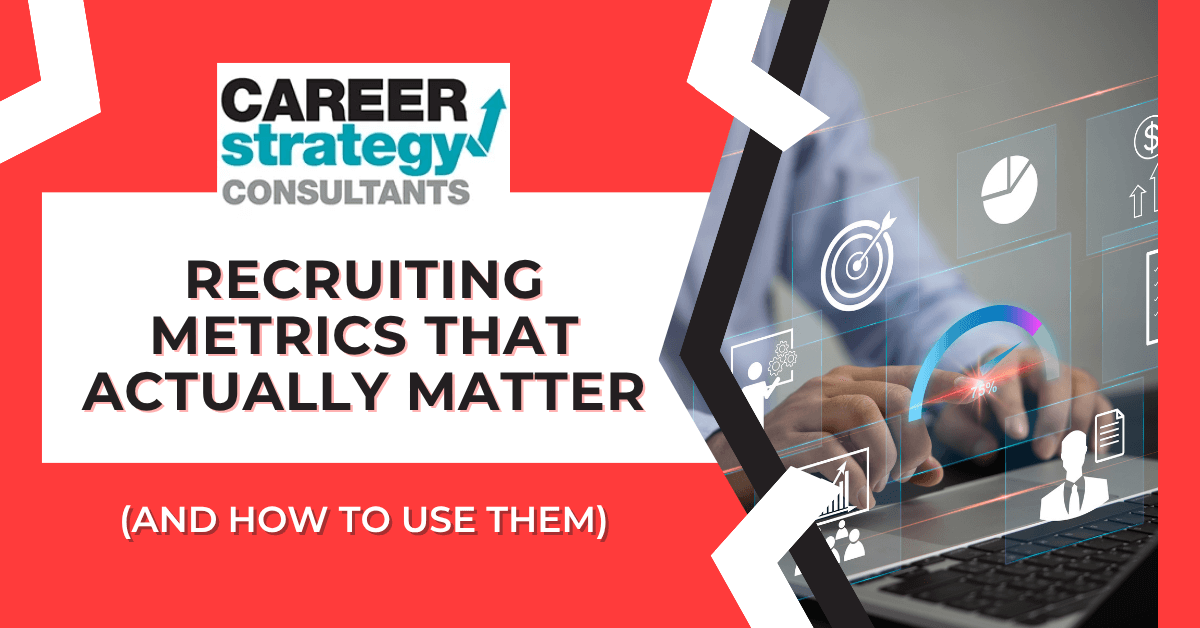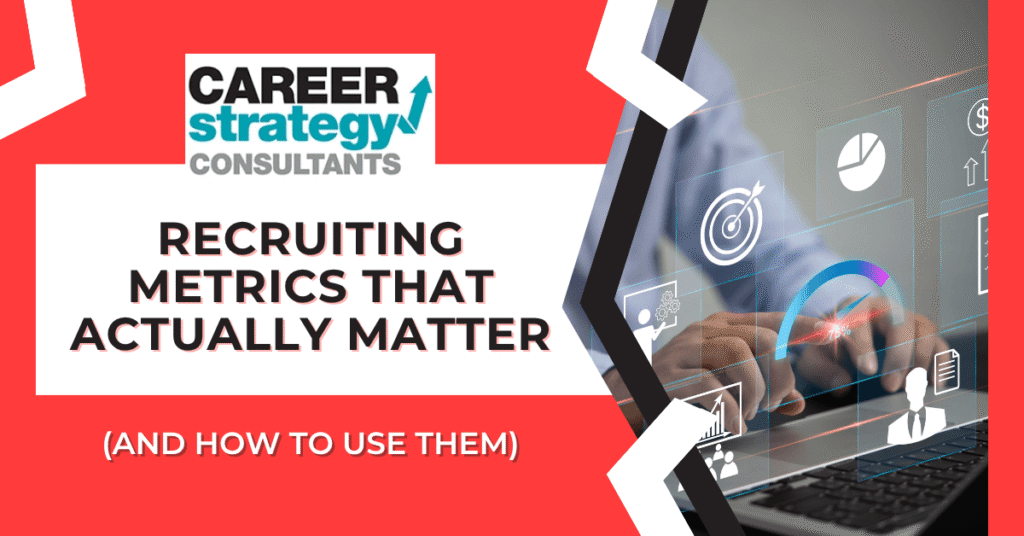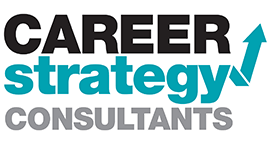Recruiting Metrics That Actually Matter (and How to Use Them)


In today’s competitive hiring landscape, companies cannot afford to fly blind. Recruiting is not just about filling seats—it’s about making data-driven decisions that save time, reduce costs, and improve overall workforce quality. By focusing on the right recruiting metrics, organizations can gain visibility into what’s working, where bottlenecks exist, and how to optimize for the future. As we move into 2026 budget planning, the ability to demonstrate measurable ROI in recruiting will set apart the companies that thrive from those that struggle.
This guide will break down the recruiting KPIs that actually matter in 2025: time-to-fill, cost-per-hire, quality-of-hire, and funnel conversion.
Why Recruiting Metrics Matter
- Justify recruiting budgets: Senior leaders want numbers before approving next year’s spend. Metrics give you proof of ROI.
- Identify bottlenecks: Is your process slowing down at sourcing, screening, or offer stages? Data reveals the weak links.
- Improve candidate experience: Tracking conversion rates ensures candidates aren’t being lost due to long waits or poor communication.
- Measure recruiter effectiveness: With clear KPIs, you can see who’s driving results and where training is needed.
Core Recruiting Metrics Every Business Should Track
Time-to-Fill
Definition: The number of days between when a job requisition opens and when a candidate accepts the offer.
- Why it matters: A long time-to-fill means lost productivity, higher overtime costs, and potential burnout for existing employees covering the gap.
- Benchmarks by industry (2025):
- Manufacturing: 36 days
- Healthcare: 49 days
- Engineering/Technical: 58 days
- Corporate/Professional Services: 41 days
How to improve:
- Streamline approvals.
- Use proactive sourcing and pipelines.
- Partner with staffing agencies for immediate candidate access.
Cost-per-Hire
Definition: The total recruiting expenses divided by the number of hires.
Formula:
Cost-per-hire = (Internal recruiting costs + External recruiting costs) ÷ Total hires
- Why it matters: Helps determine the efficiency of your recruiting function.
- Typical costs include: advertising, job boards, recruiter salaries, assessments, background checks, and agency fees.
- Benchmarks (SHRM 2025):
- Average cost-per-hire across industries: $4,700
- Executive roles: $14,900+
How to reduce:
- Invest in employer branding to lower advertising costs.
- Build pipelines to reduce emergency hires.
- Utilize contract staffing strategically to prevent excessive overtime and project delays.
Quality-of-Hire
Definition: A measure of the value new hires bring to the organization, often tracked over their first 12 months.
Common ways to measure:
- Hiring manager satisfaction (post-hire surveys).
- Performance ratings at 6 months and 12 months.
- Retention rate of new hires (e.g., % still employed after 1 year).
Why it matters: Hiring the wrong person is more expensive than waiting longer. Quality-of-hire ensures you aren’t just filling seats—you’re building future leaders.
Benchmarks (Quality-of-Hire 2025):
- Manufacturing: 1-year retention = 72%
- Healthcare: 1-year retention = 68%
- Engineering/Tech: 1-year retention = 74%
- Corporate roles: 1-year retention = 79%
Funnel Conversion Rates
Definition: The percentage of candidates who advance through each stage of your recruiting funnel.
Typical stages:
- Applications received
- Candidates screened
- Interviews conducted
- Offers extended
- Offers accepted
Why it matters: Funnel analysis shows where candidates are dropping out. For example, if only 40% of offers are accepted, you may have a compensation or employer brand issue.
Benchmarks (Recruiting Funnel 2025):
- Application to interview: 12%
- Interview to offer: 17%
- Offer to acceptance: 89%
How to improve conversions:
- Communicate quickly.
- Simplify the application process.
- Make competitive offers.
Conclusion
Recruiting metrics aren’t just numbers; they’re strategic tools that can transform your hiring process. As 2026 approaches, HR leaders and executives will demand more data-driven decisions. By tracking time-to-fill, cost-per-hire, quality-of-hire, and funnel conversions, you’ll not only improve hiring outcomes but also secure the budget and resources needed to grow.
📩 Contact us today to see how we can save your team time, improve hiring outcomes, and deliver results that stick.
Contact Us: Career Strategy Consultants | 740-325-1151 | info@careerstrategyinc.com

More Than Just Staffing
For Employers
For Individuals
